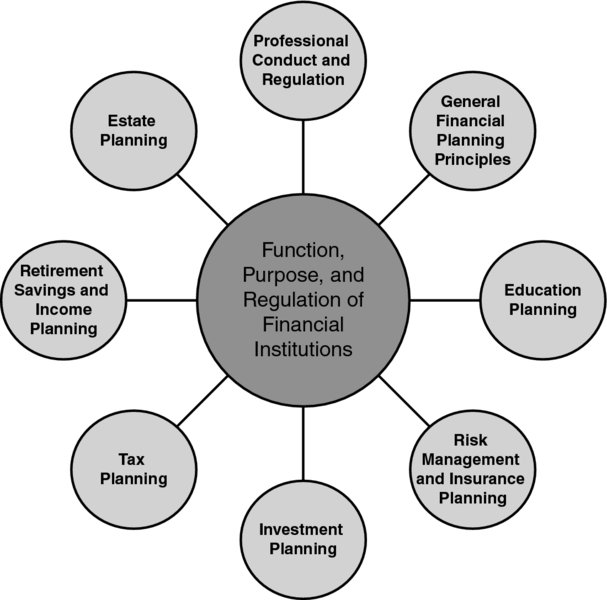CHAPTER 2 Function, Purpose, and Regulation of Financial Institutions
John E. Grable, PhD, CFP®
University of Georgia
Sonya L. Britt, PhD, CFP®
Kansas State University
CONNECTIONS DIAGRAM

The marketplace for consumer deposits, loans, insurance, and investments exists as a mechanism to facilitate the creation and use of capital. Banks, trust companies, credit unions, insurance companies, and other investment firms operate and compete in this large and interrelated marketplace. There are seven primary laws—each of which is discussed in more detail later in the chapter—and one federal depository insurance system that governs financial institutions and the securities industry.1 These laws have emerged over time in reaction to changes in consumer expectations and corporate responsibilities. Financial planners have an obligation to fully understand and apply regulations of financial institutions in their daily practice of financial planning. As illustrated in the diagram, these regulations impact every aspect of financial planning. When combined, the laws form the foundation for financial institution regulation and the functioning of financial institutions.
INTRODUCTION
Financial planners work in a highly regulated environment. Often, financial planners must work within both state and federal regulatory guidelines. There are seven key pieces of federal legislation that impact almost ...
Get Financial Planning Competency Handbook, 2nd Edition now with the O’Reilly learning platform.
O’Reilly members experience books, live events, courses curated by job role, and more from O’Reilly and nearly 200 top publishers.

